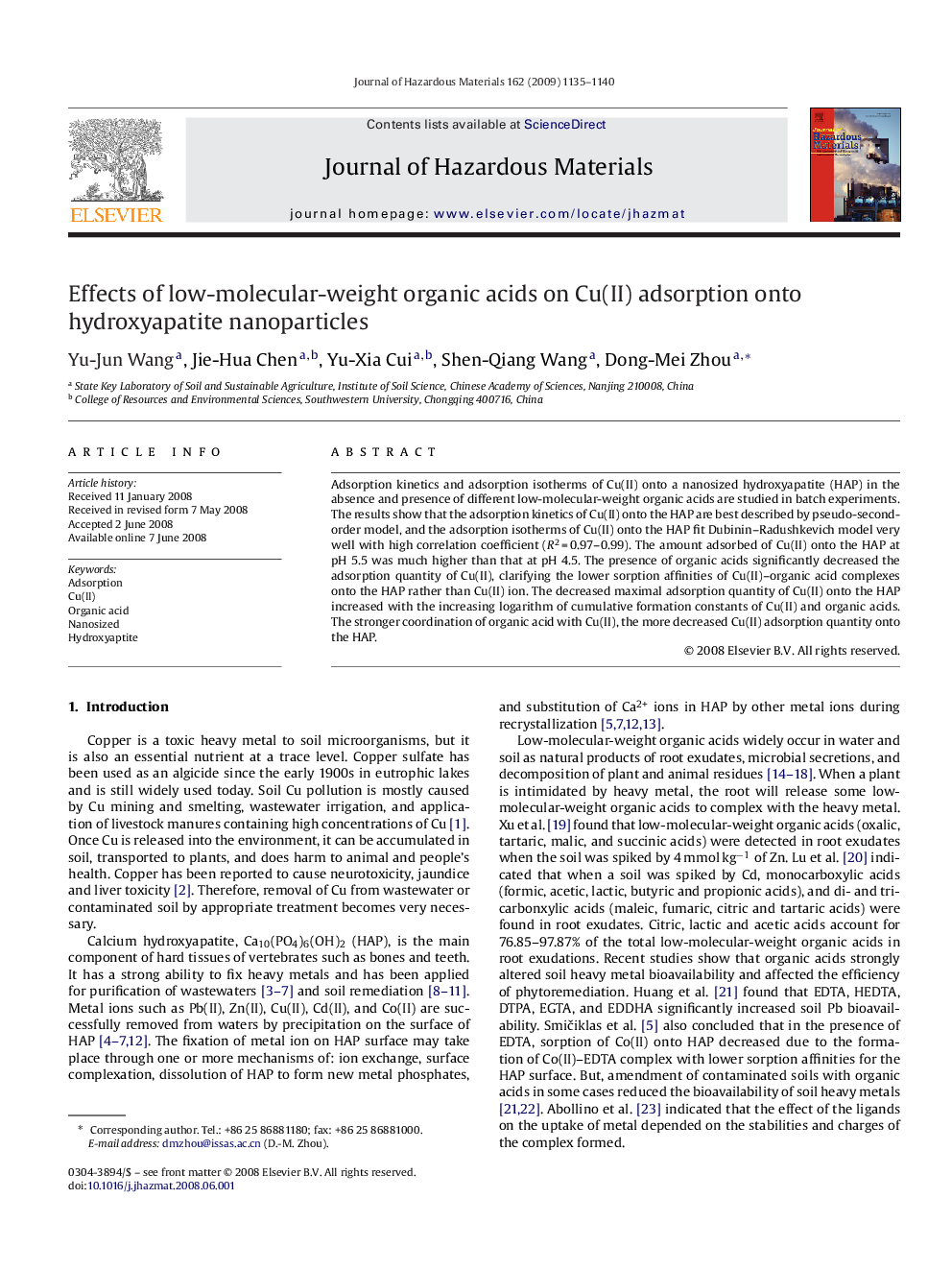| Article ID | Journal | Published Year | Pages | File Type |
|---|---|---|---|---|
| 582412 | Journal of Hazardous Materials | 2009 | 6 Pages |
Abstract
Adsorption kinetics and adsorption isotherms of Cu(II) onto a nanosized hydroxyapatite (HAP) in the absence and presence of different low-molecular-weight organic acids are studied in batch experiments. The results show that the adsorption kinetics of Cu(II) onto the HAP are best described by pseudo-second-order model, and the adsorption isotherms of Cu(II) onto the HAP fit Dubinin-Radushkevich model very well with high correlation coefficient (R2Â =Â 0.97-0.99). The amount adsorbed of Cu(II) onto the HAP at pH 5.5 was much higher than that at pH 4.5. The presence of organic acids significantly decreased the adsorption quantity of Cu(II), clarifying the lower sorption affinities of Cu(II)-organic acid complexes onto the HAP rather than Cu(II) ion. The decreased maximal adsorption quantity of Cu(II) onto the HAP increased with the increasing logarithm of cumulative formation constants of Cu(II) and organic acids. The stronger coordination of organic acid with Cu(II), the more decreased Cu(II) adsorption quantity onto the HAP.
Related Topics
Physical Sciences and Engineering
Chemical Engineering
Chemical Health and Safety
Authors
Yu-Jun Wang, Jie-Hua Chen, Yu-Xia Cui, Shen-Qiang Wang, Dong-Mei Zhou,
